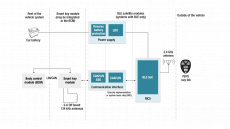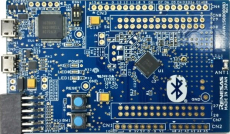
Blue Star

How PEPS technology is opening the doors to the evolution of car access systems
Car access has become more convenient as design engineers take advantage of technologies that are widely used in other applications. The automotive industry has evolved from providing mechanical keys to unlock vehicles to fobs with buttons that can unlock vehicles. Now, the most common form of car access revolves around passive entry passive start (PEPS) systems, enabling drivers to enter their car but also start the engine without physically using a key.

Ti:Car access Bluetooth® low energy + CAN satellite module reference design

蓝牙5和Mesh技术为物联网市场带来强而有力的加值作用
物联网发展到如今,无线技术纷繁复杂,往往会出现在同一区域的不同设备上,这些无线通信设备之间会出现相互干扰的现象。然而,蓝牙5标准可以减少和其他无线通信技术之间存在的干扰,帮助设备在复杂的物联网环境中与其他无线设备并存。
蓝牙5是由蓝牙技术联盟在2016年提出的蓝牙技术标准,蓝牙5在蓝牙4.2核心规范上大幅提升效能,包括「2倍的传输速度」「4倍的传输距离」「8倍的广播数据传输量」等新优势,强化了在物联网方面的新特性,重点提高物联网的功能。

Ti:Adding CAN nodes in Bluetooth® Low Energy PEPS systems
Ti SimpleLink™ CC2640R2L Flash-based wireless MCU
Bluetooth Generic Attributes
Renesas Bluetooth® Low Energy Protocol Stack for RX family

Renesas Bluetooth® Low Energy RA4W1 Solutions
Single chip Bluetooth® 5.0 Low Energy application controller using popular ARM Cortex M4 core with dedicated Secure Crypto Engine

Renesas EK-RA4W1 Evaluation Kit for RA4W1 MCU Group

Renesas Extends Bluetooth 5.0 Connectivity to RA Family of 32-Bit MCUs with Arm Cortex-M Core
Renesas Electronics Corporation introduced the first RA microcontroller (MCU) with an integrated Bluetooth® 5.0 Low Energy radio on 07 May 2020. The single-chip RA4W1 MCU includes a 48 MHz, 32-bit Arm® Cortex®-M4 core and Bluetooth 5.0 core delivered in a 56-pin QFN package. Together, the RA4W1 MCU and easy-to-use Flexible Software Package (FSP) enables engineers to immediately begin development with Arm ecosystem software and hardware building blocks that work out-of-the-box with RA MCUs.
The RA4W1 MCU makes it easy for embedded designers to develop safe and secure IoT endpoint devices for Industry 4.0, building automation, metering, healthcare, consumer wearable, and home appliance applications. The MCU is also ideal for developing IoT edge devices for wireless sensor networks, IoT hubs, an add-on to gateways, and an aggregator to IoT cloud applications.